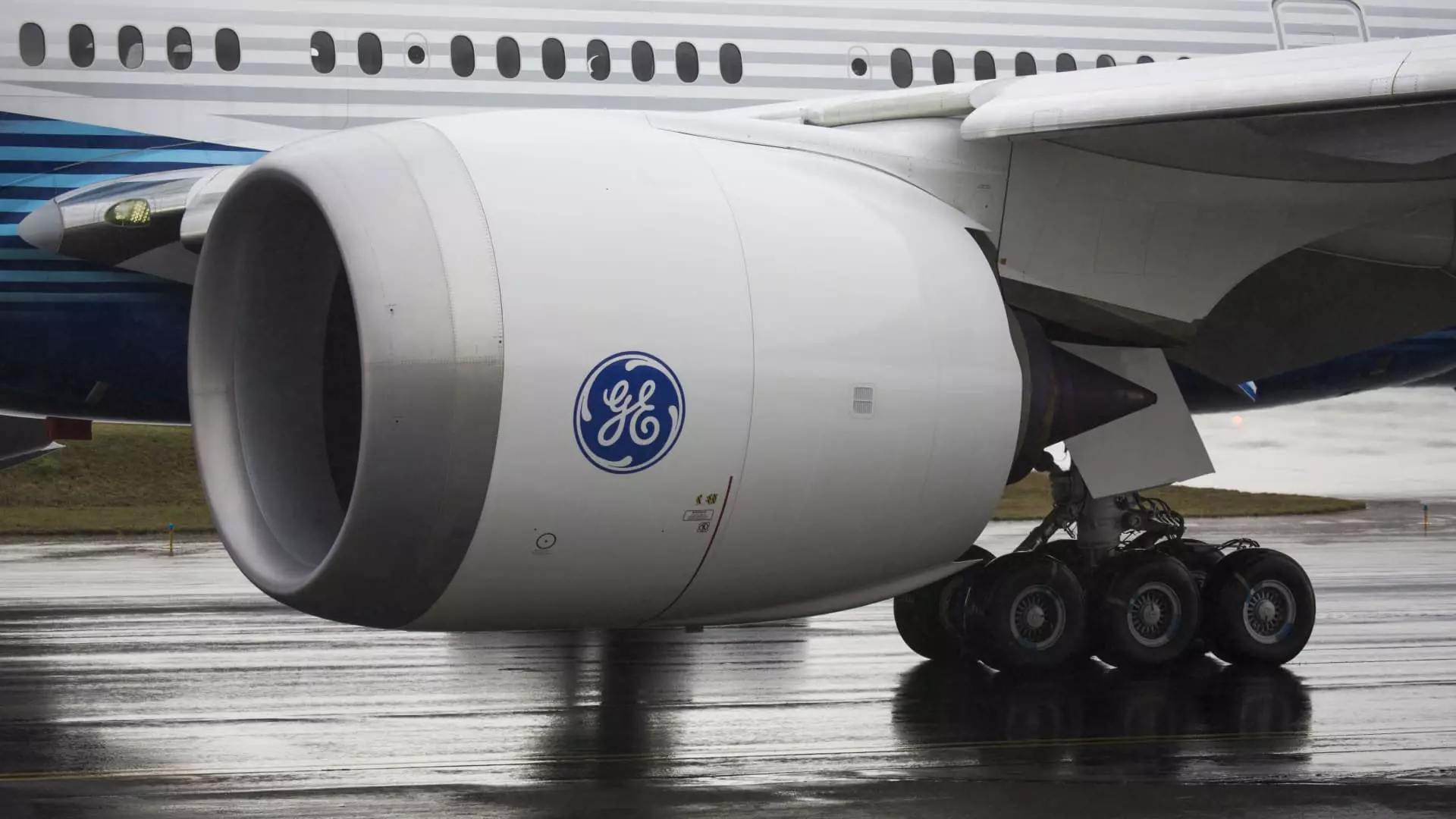While the broader market grapples with the repercussions of tariffs, GE Aerospace stands as a singular force, demonstrating how strategic foresight can turn challenges into opportunities. Analyses from financial powerhouses like Bank of America reveal that while many organizations are swamped in a sea of tariff-induced chaos, GE Aerospace has not only remained afloat but has thrived amidst the storm. Their proactive tariff mitigation strategies, coupled with a robust operational framework, provide a template for resilience in turbulent economic waters.
Analyst Ronald Epstein recently emphasized GE’s unique position within the aerospace industry, particularly regarding its role as a key provider of engines for both Boeing and Airbus. With a $230 per share price target, reflecting a promising 17% upside based on recent stock prices, one might wonder: what sets GE Aerospace apart in a climate fraught with volatility? The answer lies in its well-planned approach and commitment to sustaining growth.
Embracing Strategic Adaptation
GE Aerospace’s ability to navigate through the challenges posed by tariffs is not merely a stroke of luck but a testament to effective strategic adaptation. With an anticipated cost headwind of around $500 million due to tariffs, the company showcased its adeptness by articulating a clear strategy for absorbing these financial burdens. This goes beyond just surviving tariffs; it signifies leadership’s commitment to maintain steady growth while managing potential impacts.
This nuanced ability to predict and adapt to market fluctuations is where GE Aerospace truly shines. Epstein noted that GE’s prudence in early outlook projections enables the company to maintain an upper hand when faced with adversities. They have their fingers on the pulse of cost management, offering insights into how businesses can operationalize their strategies by leveraging free-trade zones and enhancing operational efficiency.
The Role of Free-Trade Zones
One of the vital elements in GE Aerospace’s strategy is its strategic use of free-trade zones. This approach not only aids in mitigating the effects of tariffs but also allows GE to manage its supply chain more effectively. In an industry that has long enjoyed relatively free trade, the aerospace sector’s reliance on a complex web of global suppliers makes this tactic essential.
By capitalizing on free-trade zones, GE can reduce production costs and ensure more efficient operations. This isolated advantage becomes even more pronounced during periods of escalating global trade tensions. It serves as a powerful reminder that adaptability and innovation are key tenets of successful enterprise operation in today’s world.
Concrete Leadership and Engagement
The role of strong leadership in navigating tough market conditions cannot be overstated. GE Aerospace’s CEO, Larry Culp, exemplifies this quality by actively engaging with industry influencers, including discussions with President Trump about the aerospace sector’s trade surplus. Such strategic exchanges facilitate understanding and can foster policies that benefit not only GE but the entire aviation industry.
Culp’s leadership focuses on transparency and stakeholder engagement, both of which are crucial in instilling confidence among investors. This constructive dialogue not only aids in navigating tariffs but also places GE in a proactive position to influence future trade policies that can further mitigate risks.
Market Trends and Stock Performance
The stark contrast between GE Aerospace’s performance and that of the S&P 500 highlights the company’s remarkable resilience. While GE shares have surged nearly 20% this year, broader market index losses reveal an unsettled climate across the financial landscape. This disparity speaks volumes about GE’s operational strength and agility, suggesting that it’s not merely a byproduct of the overall market’s erratic pace, but a clear indicator of the company’s strategic clarity and disciplined execution.
Such extraordinary performance amidst difficult macroeconomic conditions draws attention from both analysts and investors. It raises a critical question: what lessons can be gleaned from GE’s strategy? The unwavering focus on adaptability, cost management, and their ability to absorb shocks makes a compelling case for their modus operandi.
In navigating turbulent economic waters, GE Aerospace emerges not just as a survivor but as a leader poised for tremendous growth. Their proactive measures amidst tariff-induced challenges have set a benchmark, inviting both admiration and scrutiny regarding how other players in the industry might adopt similar strategies. They stand as a powerful reminder that, in the world of business, resilience often becomes the cornerstone of success.


Leave a Reply